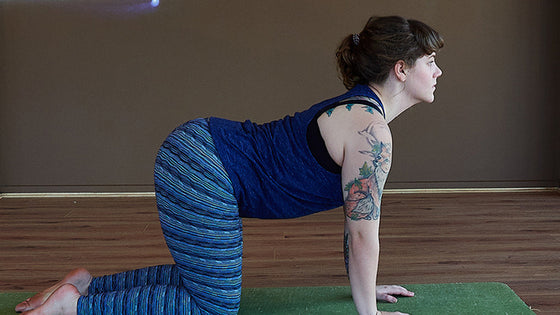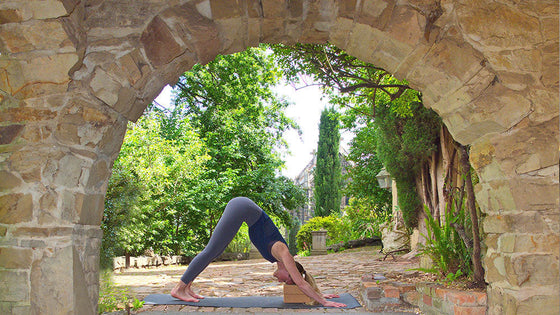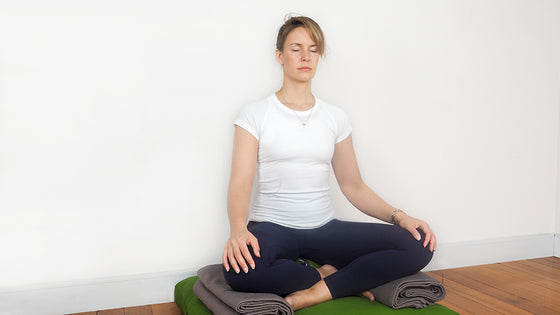- Ergonomic Products
- Ergonomic Furniture
- Yoga
- Meditation
- Pilates
- Air Treatment
- Blog
- Resources
- About Us
- Wholesale
- Ergonomic Products ▼
- Ergonomic Furniture ▼
- Yoga ▼
- Meditation ▼
- Pilates ▼
- Air Treatment ▼
- Blog
- Resources ▼
- About Us
- Wholesale
- Sign in
How to use yoga sandbags for a deeply grounding practice
Sandbags are powerful yoga props. In restorative and yin yoga, these beefy fellows love to help you feel supremely supported and grounded. Under their firm yet gentle weight, sandbags offer to melt tightly gripped muscles, smooth out frazzled energy and wrap the emotions in a welcome sense of security.
Every yoga pose has an anchor point upon which the body can tether. Placed over one or more of these anchor points, the pressure of a sandbag can facilitate increased passivity in the body and grant an opportunity to dissolve physical tensions and quiet mental chatter.
Why weight?
Think about how a juicy, firm hug from a loved one feels - likely comforting, reassuring and yummy! And what about when we wrap a blanket around a squirmy, unsettled baby? Most times the gentle squeeze from a friendly hug or swaddle has a soothing effect, helping us feel safe, settled and secure. Sandbags work on this same principle. Deep pressure has a direct link to the amygdala, the part of the brain responsible for emotions, survival, memory and sensory processing. The pressure of a yoga sand bag on the body helps to calm and diffuse feelings of anxiety, flightiness and sensory overload.
Physically, sandbags can help to deepen passive stretches and improve muscle strength.
What’s in the bag?
Consisting of a sturdy outer casing with zip closure and carry-handle, the lighter inner bag is filled with enough play sand or uncooked rice to achieve the desired weight. Ideally, the weight of a sand bag should feel comfortable enough to hold easily for several minutes.
Ready to get grounded with a sandbag or two?
Try this soothing practice, including suggestions for grounding thoughts you can contemplate or repeat silently while in the poses. Stay in each pose for 5 minutes or more, switching sides where applicable. Enjoy the relaxing effect of each pose as you yield to gravity and slowly ungrip.
Balasana (Child’s Pose)
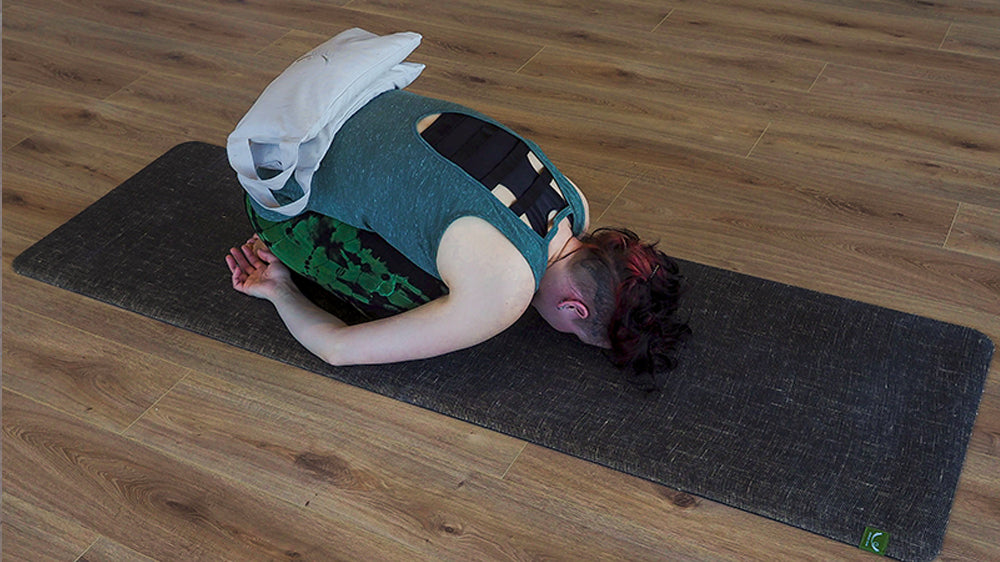
If you love Balasana already, just wait til you add a sandbag - YUM! The extra weight gently lengthens out the spine and delivers a juicy stretch to the hips. Settle yourself in the pose, and have a friend place the sandbag across your sacrum.
Grounding thought - ‘I surrender.’
Supta Padangustasana (Reclining Big Toe Pose)

In this pose the resting thigh often wants to pop up - use a sandbag as a steady anchor. Flex both feet and loop a yoga strap over the balls of the toes on the raised leg. To open up into the hips a little more, take the strap into one hand and extend the raised leg out to the side. Let the sandbag remind you to keep the pelvis steady.
Grounding thought - ‘I am stable.’
Jathara Parivatanasana (Revolved Abdomen Pose)

A sandbag is useful in this twist to encourage lifted shoulders descend. If desired, add an extra sandbag over the top thigh for even more grounding through the legs.
Grounding thought - ‘I am enough.’
Upavista Konasana (Seated Wide Angle Pose)
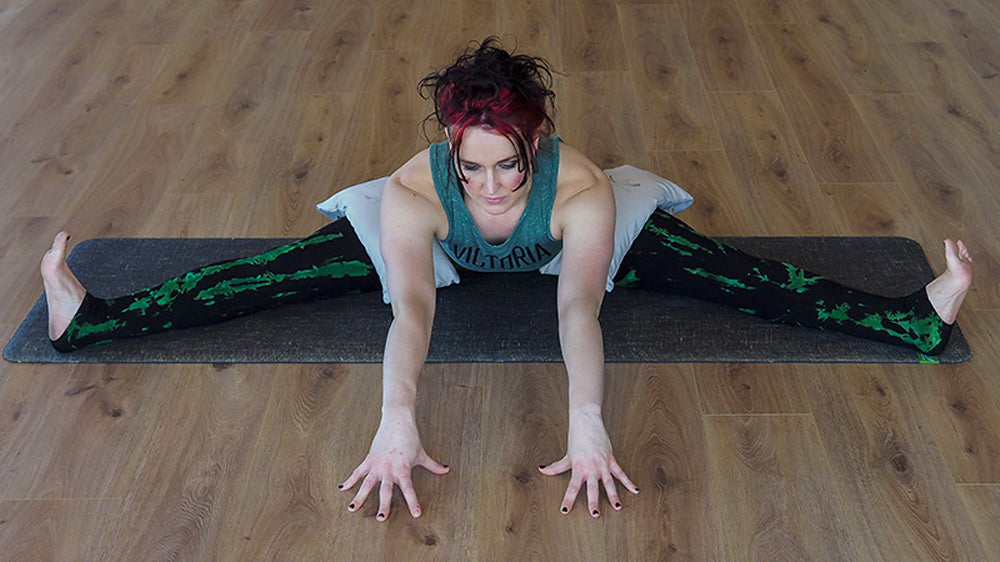
Place one sandbag on each thigh to encourage external rotation of the legs while keeping the sit-bones in contact with the floor.
Grounding thought - ‘It is safe for me to move forward.’
Dandasana (Staff Pose)
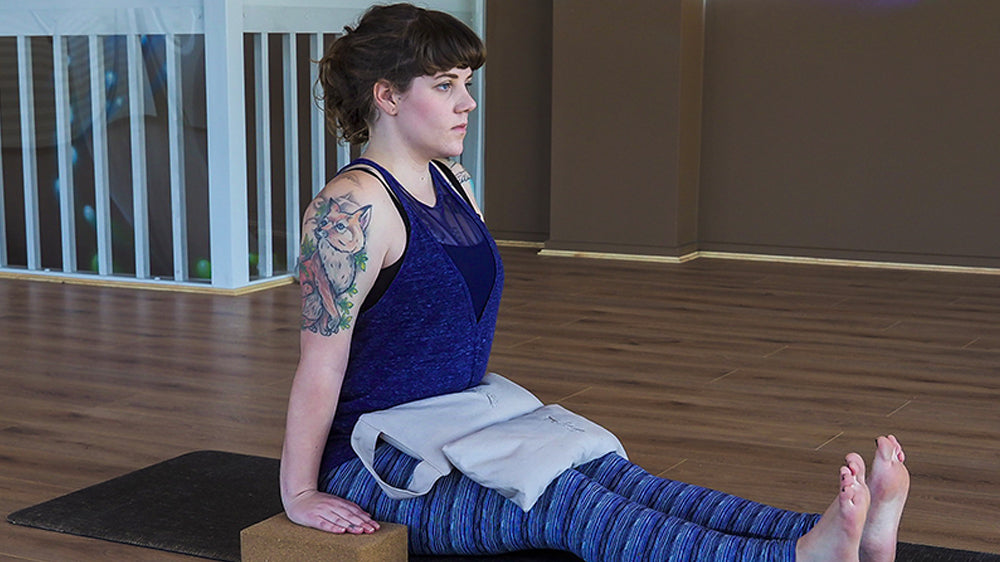
Drape a sandbag on the top of the thighs near the waist to help you root down into the earth as you lengthen the spine skyward.
Grounding thought - ‘I am deeply supported as I grow.’
Supta Baddha Konasana
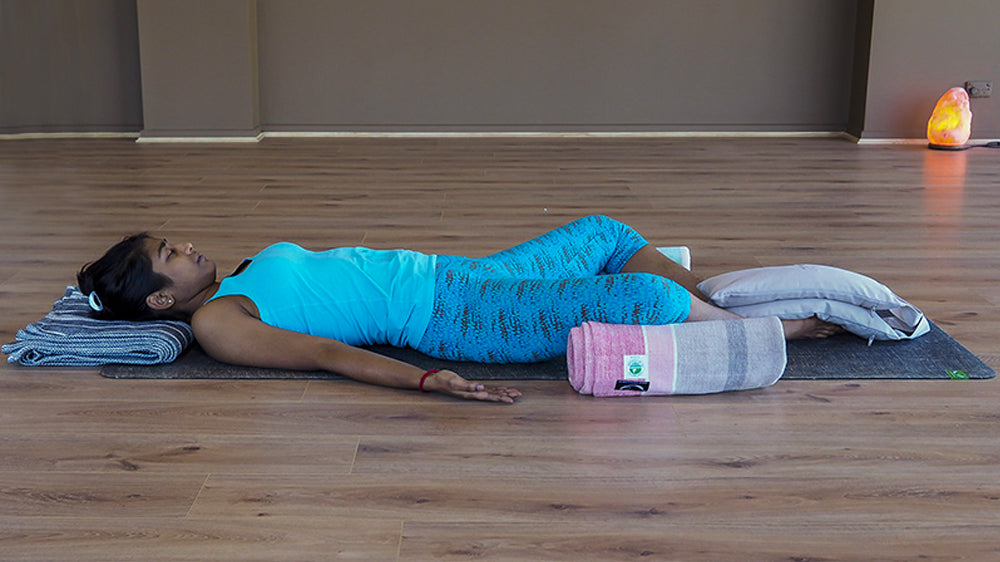
Treat the feet with the warmth and weight of a sandbag. Add other props such as blankets or bolsters under the knees for extra support.
Grounding thought - ‘I am open to letting go.’
Savasana

Lay a sandbag across the pelvis to soften the hips and lower back. Cradle an eye pillow in the palm of each hand for an extra-special touch.
Grounding thought - ‘I am fully supported by Mother Earth’
Practice tips:
